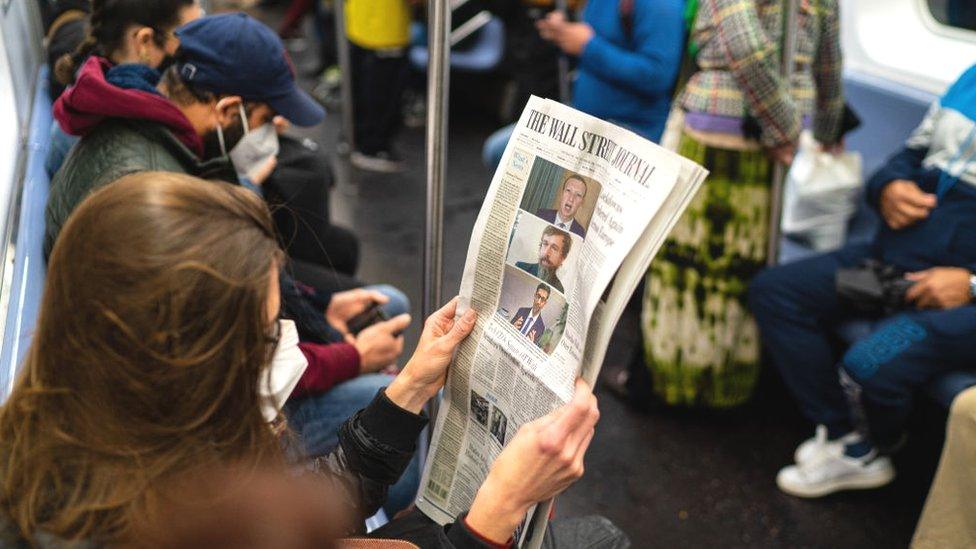What is Mail News USA?
At its core, Mail News USA is a hybrid of old-fashioned mail delivery and modern news dissemination. It combines the tactile, personalized experience of receiving physical mail with the convenience of digital communication and content delivery.
Essentially, Mail News USA offers subscribers the opportunity to receive curated, up-to-date news delivered directly to their mailbox. These newsletters often include a mix of national and international news, political commentary, business reports, and lifestyle articles, much like what you would find in the daily newspaper—but with a more focused, perhaps niche, perspective Ca Headline.com.
The Evolution of News Delivery
The idea behind Mail News USA can be traced to the evolution of news delivery over the last century. Newspapers were once the cornerstone of communication, reaching millions of households daily. But with the rise of the internet, social media, and 24-hour cable news, the way we receive our news has dramatically changed. The rise of digital platforms led to a decline in traditional newspaper subscriptions, forcing many outlets to reimagine their business models.
In recent years, a resurgence of interest in direct mail has occurred, not just for advertising or marketing, but for content delivery as well. Direct-mail newsletters are being revived as a more personalized, tactile form of communication that many readers feel is more trustworthy and less prone to the noise of digital platforms.
While Mail News USA embraces modern technology for content creation and distribution, it’s the tangible nature of receiving a physical copy in the mail that draws attention. In fact, this model could provide a new way for journalists to build loyal communities, as readers are more likely to feel a connection with content that arrives in their mailbox.
The Benefits of Mail News USA
Personalized News: Unlike traditional print newspapers that serve mass markets, Mail News USA can offer curated, personalized content based on the subscriber’s preferences. Subscribers may choose specific topics of interest, from politics to culture or technology, ensuring that the news they receive is relevant and engaging.
Less Distraction, More Focus: One of the biggest challenges of digital news consumption is the constant barrage of notifications, pop-ups, and unrelated content. A physical newsletter offers a distraction-free way to consume news—when you open it, it’s simply about reading and digesting information without the digital overload.
Trustworthy and Authoritative Content: The process of printing and mailing news lends an air of legitimacy and authority. In an age where misinformation spreads easily online, printed newsletters often feel more vetted and trustworthy. The curatorial nature of Mail News USA can attract audiences seeking high-quality journalism.
Easy to Archive and Share: While digital news can often be lost in a sea of other online content, physical newsletters can be kept, archived, and shared with family and friends. This tactile nature of print gives readers something they can hold onto, much like the nostalgia some people feel for printed magazines and books.
A More Sustainable Model: With the rise of online media, many publishers have faced financial challenges, particularly with advertising revenue shrinking. Mail News USA offers an alternative by focusing on subscription models, which could help ensure the financial stability of independent journalism.
Challenges and Limitations
While the potential for success is great, Mail News USA and similar services face certain challenges. The most obvious one is the cost. Printing and mailing physical newsletters requires substantial resources—paper, ink, labor, and postal services—all of which add up quickly. To remain profitable, these services must strike the right balance between subscription costs and quality content production.
Moreover, there’s the question of reach. While many readers enjoy receiving mail, some may not want to commit to a subscription service, particularly younger audiences accustomed to the immediacy and accessibility of digital news. The future of Mail News USA may depend on how well it can engage these digitally-native consumers and convince them of the value of physical mail.
Another challenge is sustainability. Print media production has an environmental cost, and as the world grows more eco-conscious, Mail News USA will need to find ways to offset its carbon footprint, whether through eco-friendly printing practices, renewable energy, or other sustainability measures.
The Future of Mail News USA and Similar Services
The future of Mail News USA and similar mail-based journalism models could be bright, especially as people continue to seek alternatives to the overwhelming amount of information available online. By providing personalized, focused content that cuts through the noise of digital platforms, these services have the potential to tap into a market of readers craving a more thoughtful, intentional approach to consuming news.
For Mail News USA to succeed in the long term, it will need to continue adapting to the changing media landscape. This could mean integrating digital elements with print (such as QR codes or links to digital content) or expanding its service to offer multimedia content like videos and podcasts via mail.
Moreover, as traditional print media continues to face decline, the potential for smaller, niche publications to thrive via direct-mail models is significant. This shift could also pave the way for more local, community-focused journalism—something that large digital news organizations often overlook.
Conclusion
Mail News USA is an exciting example of how traditional journalism can evolve and adapt to the modern world. Combining the best of both print and digital, it offers a promising future for the news industry by bringing people closer to the content they care about—delivered straight to their doorsteps. As technology continues to shape the way we communicate, models like Mail News USA may provide a bridge between the past and the future, bringing us back to the days when news was something to hold, treasure, and share.

